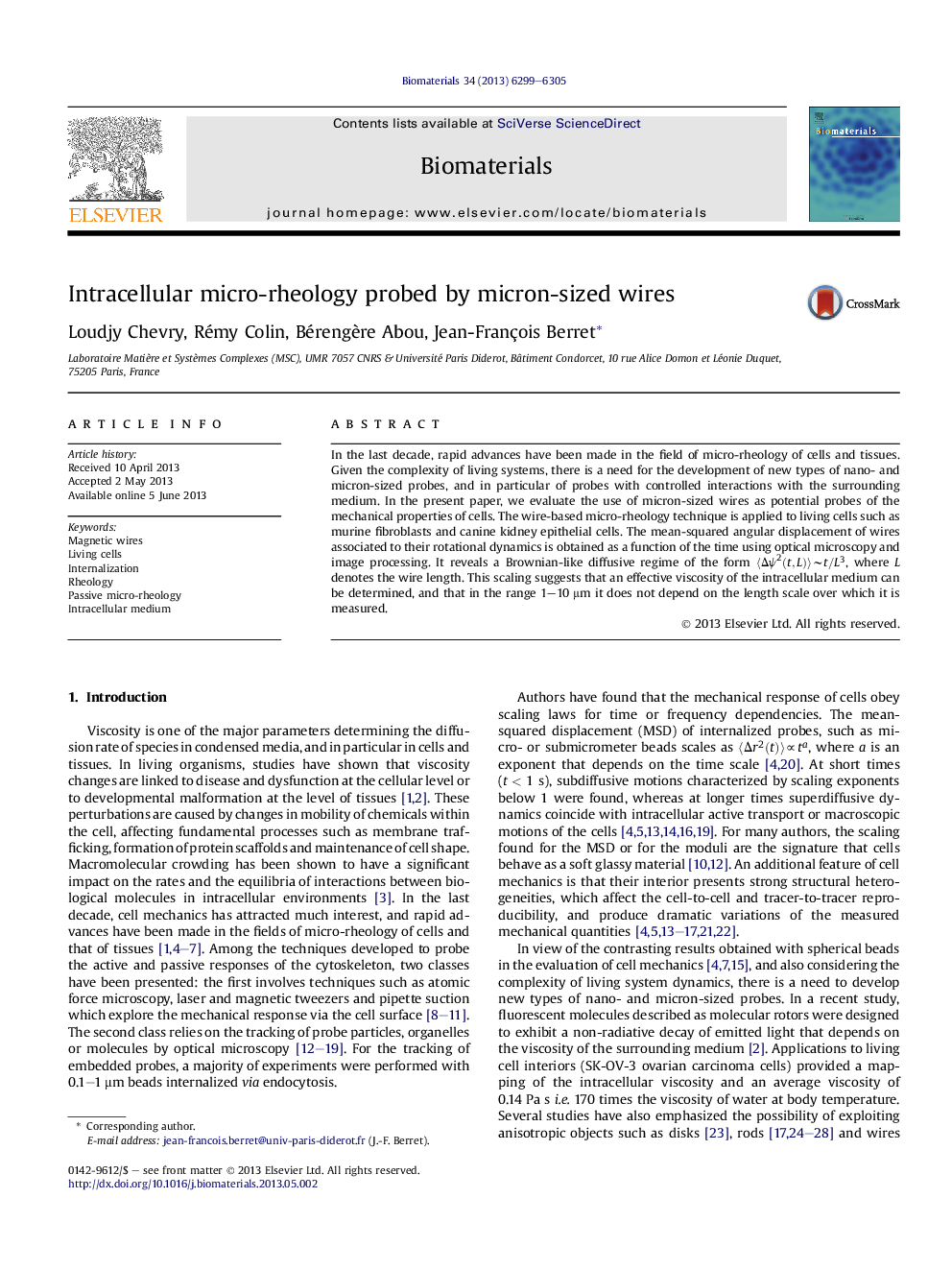| Article ID | Journal | Published Year | Pages | File Type |
|---|---|---|---|---|
| 10228221 | Biomaterials | 2013 | 7 Pages |
Abstract
In the last decade, rapid advances have been made in the field of micro-rheology of cells and tissues. Given the complexity of living systems, there is a need for the development of new types of nano- and micron-sized probes, and in particular of probes with controlled interactions with the surrounding medium. In the present paper, we evaluate the use of micron-sized wires as potential probes of the mechanical properties of cells. The wire-based micro-rheology technique is applied to living cells such as murine fibroblasts and canine kidney epithelial cells. The mean-squared angular displacement of wires associated to their rotational dynamics is obtained as a function of the time using optical microscopy and image processing. It reveals a Brownian-like diffusive regime of the form ãÎÏ2(t,L)ãâ¼t/L3, where L denotes the wire length. This scaling suggests that an effective viscosity of the intracellular medium can be determined, and that in the range 1-10 μm it does not depend on the length scale over which it is measured.
Related Topics
Physical Sciences and Engineering
Chemical Engineering
Bioengineering
Authors
Loudjy Chevry, Rémy Colin, Bérengère Abou, Jean-François Berret,
